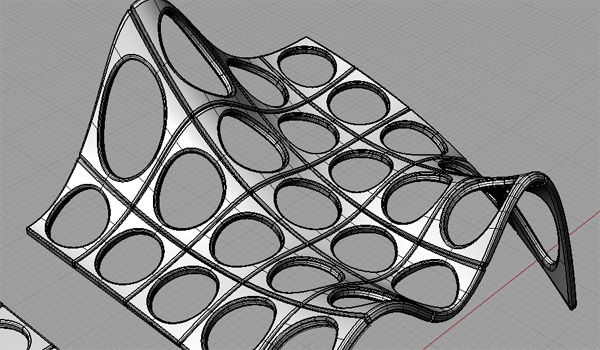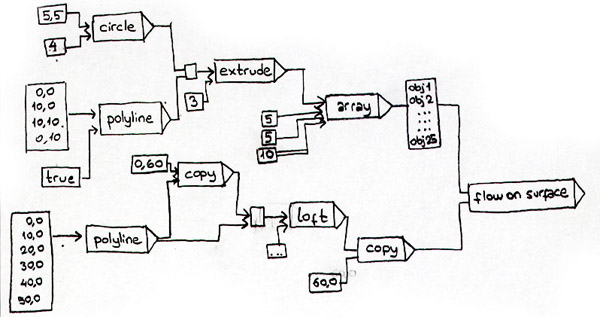Cellular Canopy
by Tuğrul Yazar | January 8, 2012 03:37

The cellular canopy is an anonymous tutorial on the history recording capability of Rhino. I’ve been using a “pedagogical” version of this tutorial as an educational tool on the introduction to Grasshopper and Parametric Modeling for architects. The interesting thing with such exercises is they quickly attract students’ attention to the process of designing, in other words, “designing the design process”; is one of the first things we should emphasize in courses on design computing.
Here, we plan and develop a 3d model that uses regular flow on surface command. However, while we are doing this, we also start to create a pseudo-parametric definition (or diagram) of the modeling process. In the end, this gives us the complete dataflow diagram of the 3d model. Students are expected to start understanding both the differences between geometric modeling and parametric modeling and also between procedural computing and dataflow computing. Below is an example of such diagrams students generate in class.

Here is the Rhino document (about 16MB), be careful the canopy might slow your computer while updating the surface: [3DM: 2012_01_10-canopy][1]
- [3DM: 2012_01_10-canopy]: https://www.designcoding.net/decoder/wp-content/uploads/2012/01/2012_01_10-canopy.3dm
Source URL: https://www.designcoding.net/parametric-design-of-a-cellular-canopy/